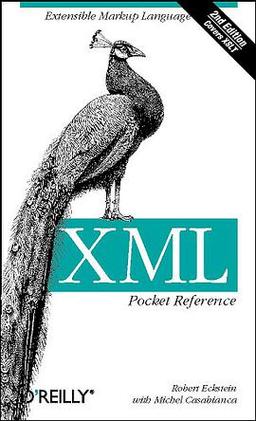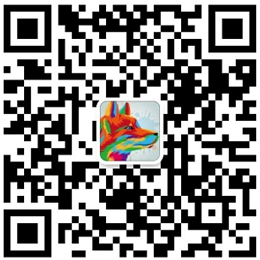This specification defines an abstract data set called

the XML Information Set
(Infoset).
Its purpose is to provide a consistent set of definitions for use
in other specifications that need to refer to the information in a well-formed
XML document [XML].
It does not attempt to be exhaustive; the primary criterion for inclusion
of an information item or property has been that of expected usefulness
in future specifications. Nor does it constitute a minimum set of
information that must be returned by an XML processor.
An XML document has an information set if it is well-formed and
satisfies the namespace constraints described
below.
There is no requirement
for an XML document to be valid in order to have an information set.
Information sets may be created by methods (not described in this
specification) other than parsing an XML document.
See Synthetic Infosets below.
An XML document's information set consists of a number of
information items;
the information set for any well-formed XML document
will contain at least a
document information item
and several others.
An information item is an abstract description of some part of an XML
document: each information item has a set of associated named
properties. In this specification, the
property names are shown in square brackets, [thus].
The types of information item are listed in
section 2.
The XML
Information Set does not require or favor a specific interface or class of
interfaces. This specification presents the information set as a modified
tree for the sake of clarity and simplicity, but there is no requirement that
the XML Information Set be made available through a tree structure; other
types of interfaces, including (but not limited to) event-based and query-based
interfaces, are also capable of providing information conforming to the XML
Information Set.
The terms "information set" and "information
item" are similar in meaning to the generic terms "tree" and "node", as they
are used in computing. However, the former terms are used in this specification
to reduce possible confusion with other specific data models. Information
items do not map one-to-one with the nodes of the DOM or the "tree"
and "nodes" of the XPath data model.
In this specification, the words "must",
"should", and "may" assume the meanings specified in
[RFC2119], except that the words do not appear in
uppercase.
XML documents that do not conform to
[Namespaces],
though technically well-formed,
are not considered to have meaningful information sets.
That is, this specification does not define an information
set for documents that have element or attribute names containing colons that
are used in other ways than as prescribed by
[Namespaces].
Furthermore, this specification does not define an information set for
documents which use relative URI references in namespace declarations.
This is in accordance with the decision of the W3C XML Plenary Interest
Group described in [Relative Namespace URI References].
The value of a [namespace name] property is the normalized value of
the corresponding namespace attribute; no additional URI escaping is
applied to it by the processor.
An information set describes its XML document with entity
references already expanded, that is, represented by the information
items corresponding to their replacement text. However, there are
various circumstances in which a processor may not perform this
expansion. An entity may not be declared, or may not be retrievable.
A non-validating processor may choose not to read all declarations,
and even if it does, may not expand all external entities. In these
cases an
unexpanded entity reference
information item is used to represent the entity reference.
The values of all properties in the Infoset
take account of the end-of-line normalization described in
[XML], 2.11 "End-of-Line Handling".
Several information items have a [base URI] or [declaration base URI] property.
These are computed according to
[XML Base].
Note that retrieval of a resource may involve redirection
at the parser level (for example, in an entity resolver) or below;
in this case the base URI is the final URI used to retrieve the resource
after all redirection.
The value of these properties does not reflect any URI escaping that
may be required for retrieval of the resource, but it may include
escaped characters if these were specified in the document, or returned
by a server in the case of redirection.
In some cases (such as a document read from a string or a pipe) the
rules in
[XML Base]
may result in a base URI being application
dependent. In these cases this specification does not define
the value of the [base URI] or [declaration base URI] property.
When resolving relative URIs the [base URI] property should be used in
preference to the values of xml:base attributes; they may be inconsistent
in the case of Synthetic Infosets.
Some properties may sometimes have the value
unknown or
no value,
and it is said that a property value is unknown or that a property
has no value respectively.
These values are distinct from each other and from all other values.
In particular they are distinct from the empty string, the empty set,
and the empty list, each of which simply has no members.
This specification does not use the term null since in some
communities it has particular connotations which may not match those
intended here.
This specification describes the information set resulting from parsing
an XML document. Information sets may be constructed by other means,
for example by use of an API such as the DOM or by transforming an
existing information set.
An information set corresponding to a real document will necessarily
be consistent in various ways; for example the [in-scope namespaces]
property of an element will be consistent with the [namespace
attributes] properties of the element and its ancestors. This may not
be true of an information set constructed by other means; in such a case
there will be no XML document corresponding to the information set,
and to serialize it will require resolution of the inconsistencies
(for example, by outputting namespace declarations that correspond to
the namespaces in scope).
2025年国内旅游收入预计将突破历史新高,以下是综合多方数据的预测与分析:
一、核心数据预测

工作时间:8:00-18:00
电子邮件
扫码二维码
获取最新动态
